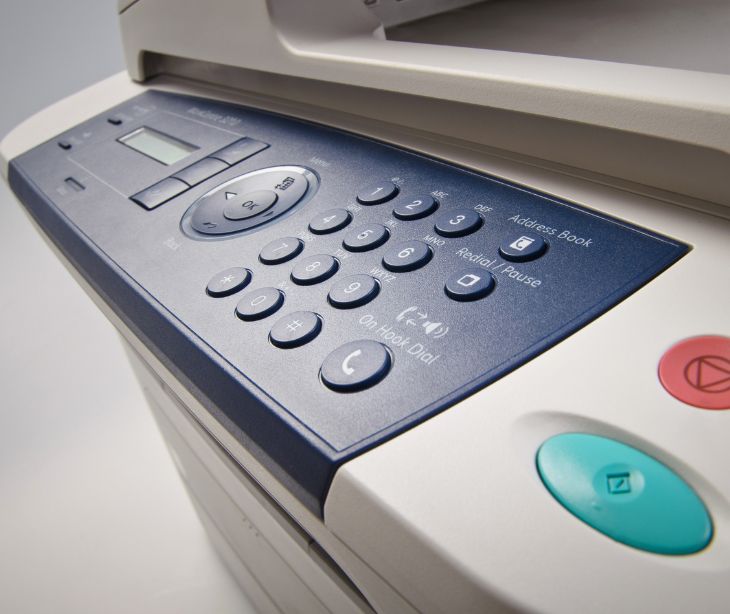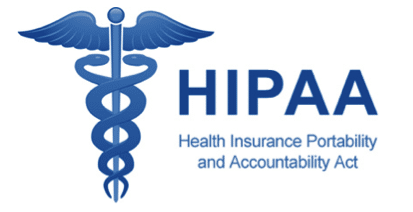
HIPAA does not prohibit using fax machines for transmitting protected health information (PHI). Faxing is often preferred when other secure alternatives, such as secure portals or electronic data interchange (EDI), are unavailable. However, healthcare organizations must adhere to strict regulations to protect the privacy and security of patient information during transmission and at the point of delivery.
Understanding HIPAA compliance in faxing
HIPAA compliant faxing has gained prominence as healthcare organizations transitioned from traditional hardcopy paper systems to digital communication methods. While faxing itself is inherently secure and point-to-point, HIPAA compliance requires additional safeguards to be implemented before sending and after receiving faxes. According to the HHS, “covered entities must have in place reasonable and appropriate administrative, technical, and physical safeguards to protect the privacy of protected health information that is disclosed using a fax machine.”
Read more: Can I send a HIPAA compliant fax? Yes, but you should use email instead
How to make faxing HIPAA compliant
HIPAA guidelines emphasize the importance of implementing "reasonable" efforts to ensure compliance, rather than prescribing specific technical protocols. However, best practices have emerged for faxing within and between covered entities. By following these practices, healthcare organizations can enhance the security of fax transmissions and minimize the risk of unauthorized access to patient information. Some of the most common practices include:
- Securing fax machines: All fax machines should be placed in a secure area that is not accessible to unauthorized individuals. Only authorized personnel should have access to the machines, and security measures should be in place to enforce this.
- Verification of destination numbers: Before transmitting a fax, healthcare organizations should verify the accuracy of the destination numbers to ensure that sensitive information is being sent to the intended recipient.
- Notification to recipients: Recipients should be notified when they receive a fax containing confidential health information. This notification serves as a reminder to handle the information with care and to take appropriate security measures.
- Use of cover sheets: Each fax should be accompanied by a cover sheet clearly stating that the fax contains confidential health information, is being sent with the patient's authorization, and should not be passed on to other parties without express consent.
- Secure storage of received faxes: Once a fax is received, it should be stored in a secure location to prevent unauthorized access. This ensures that the information remains confidential and protected.
Read also: Why aren't faxes effective for patient communication?
The role of API in HIPAA compliant faxing
Healthcare enterprises often rely on various applications and software solutions to streamline their operations. To extend HIPAA compliant faxing capabilities to these applications, the use of API (Application Programming Interface) is necessary. APIs allow different software systems to communicate and exchange data seamlessly, including fax transmissions.
With the advent of cloud-based faxing solutions healthcare organizations gain exceptional control over how PHI is handled during fax transmissions. This simplifies the integration of HIPAA compliant faxing into virtually any application, ensuring that sensitive patient information is transmitted securely and in accordance with HIPAA guidelines.
Related: What is an API?
Risks of traditional fax methods for HIPAA compliance
While faxing remains a popular method for exchanging patient information in healthcare, manual faxing methods can introduce potential risks to HIPAA compliance. Despite the best intentions, healthcare organizations may struggle to consistently uphold all the important security measures, leaving room for vulnerabilities. Some of the risks associated with traditional faxing methods include:
- Delayed handling of incoming faxes: In busy healthcare settings, incoming faxes may not be promptly removed from the output tray and distributed to the intended recipient. This delay increases the risk of inappropriate use or disclosure of sensitive information.
- Lack of regular validation of fax numbers: Preprogrammed fax numbers may become outdated or change over time. Without regular validation, healthcare organizations may unknowingly transmit sensitive information to incorrect recipients.
- Accessibility of fax machines: Even if a fax machine is located in a secure area, it may still be accessible to multiple individuals, increasing the risk of unauthorized access to sensitive information.
- Insecure storage of hard copies: Patient information printed from fax machines must be filed securely to prevent unauthorized access. Failure to do so compromises the confidentiality and integrity of the information.
See also: HIPAA Compliant Email: The Definitive Guide
FAQs
Are there limitations on faxing PHI under HIPAA?
While faxing PHI is permitted, covered entities and business associates must comply with HIPAA's security rules. This entails implementing administrative, physical, and technical safeguards to prevent unauthorized access or disclosure of PHI transmitted via fax.
Does HIPAA allow the faxing of patient information across international borders?
Faxing patient information internationally may pose additional challenges and risks regarding data protection and privacy laws. Covered entities should ensure compliance with applicable regulations and consider alternative secure transmission methods for international communications.
What should be done if a fax containing PHI is sent to the wrong recipient?
In the event of a faxing error or unintended disclosure of PHI, covered entities must follow established breach notification procedures under HIPAA. This may include promptly notifying affected individuals and taking corrective actions to mitigate potential harm.
Does HIPAA address the retention of faxed documents containing PHI?
HIPAA requires covered entities to maintain proper documentation of faxed PHI, including retention policies that specify the length of time faxed documents should be stored. Secure storage and disposal methods should also be implemented to protect patient privacy and comply with regulatory requirements.
See also: Top 10 HIPAA compliant email services
Subscribe to Paubox Weekly
Every Friday we'll bring you the most important news from Paubox. Our aim is to make you smarter, faster.




